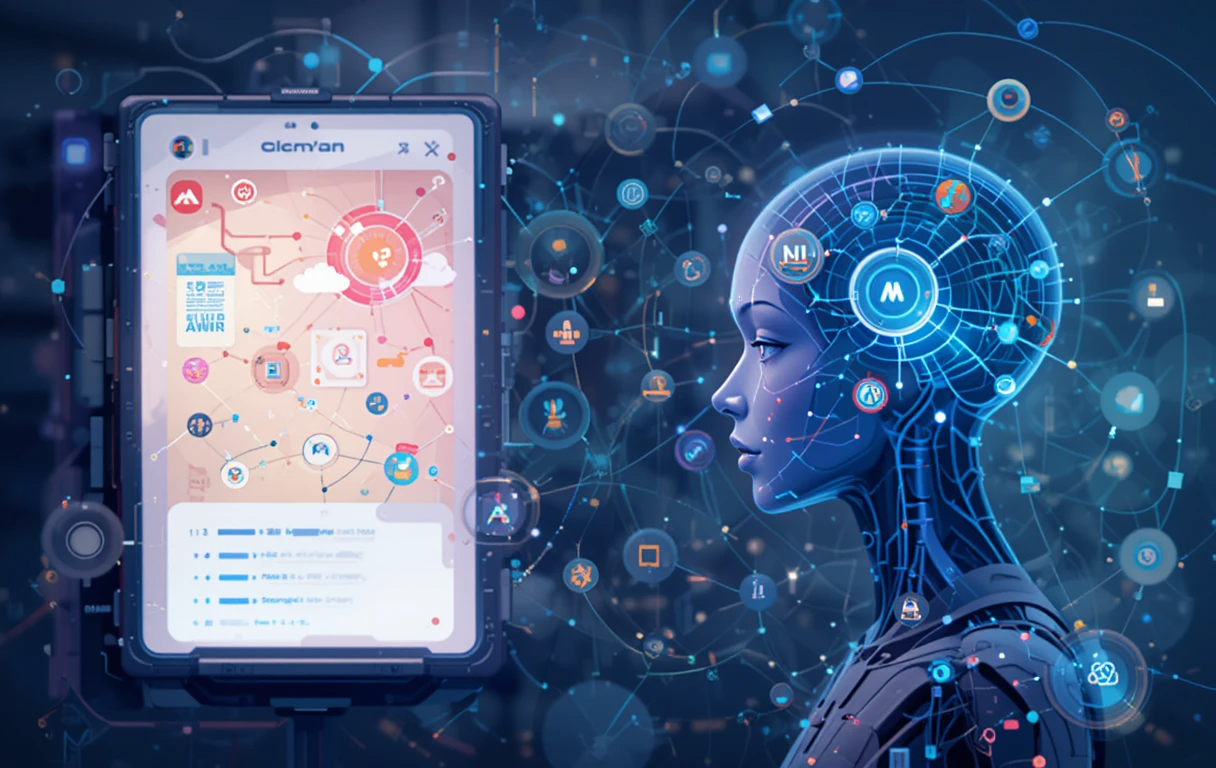In today’s rapidly evolving world, artificial intelligence (AI) has become a cornerstone of innovation across nearly every industry. Education is no exception. Whether you’re a school student, college learner, or lifelong upskiller, AI is already reshaping the way we learn.
Unlike traditional educational systems that use a one-size-fits-all model, AI empowers personalized, interactive, and data-driven learning. In this blog post, we’ll explore 10 powerful ways AI can transform your learning journey—making education not just smarter, but more accessible, engaging, and effective.
1. Personalized Learning Paths
The biggest advantage of AI in learning is personalization. Traditional classrooms can’t fully adapt to every student’s pace, style, and knowledge gaps. AI can.
How it works:
AI analyzes your performance data—like quiz scores, time spent on tasks, and learning preferences—to customize your educational content in real-time. It identifies your strengths and weaknesses, then adjusts lessons accordingly.
Real-world example:
Apps like Khan Academy and Coursera provide personalized recommendations based on your learning history and goals. Adaptive learning tools help ensure no learner is left behind.
Impact:
You learn at your pace, focus on your weak areas, and skip what you already know—saving time and boosting retention.
2. Instant Feedback and Evaluation
One of the most frustrating parts of learning is waiting days or weeks to get feedback. AI changes that.
AI-powered systems provide instant feedback on assignments, quizzes, or even long-form writing. This enables learners to quickly identify mistakes and correct them immediately.
Tools like:
- Grammarly provides AI-based writing feedback.
- Quillionz and Gradescope help evaluate essays and multiple-choice questions in real-time.
Impact:
Faster feedback leads to quicker improvement, better confidence, and more efficient learning cycles.
3. Smart Tutors and Chatbots
Imagine having a tutor who’s always available, never gets tired, and answers questions instantly. That’s what AI-powered chatbots and tutors provide.
AI chatbots like Socratic by Google, ChatGPT, or Jill Watson (used by Georgia Tech) can answer student questions, explain complex concepts, or guide learners through problem-solving processes.
Impact:
You get 24/7 access to support, reducing dependency on scheduled classes or live instructors. This especially benefits students who learn at odd hours or need repetition.
4. Efficient Time Management and Study Planning
AI doesn’t just help you learn—it helps you plan.
AI-based study planners analyze your syllabus, available time, performance, and upcoming deadlines to create a personalized schedule. Apps like MyStudyLife and Taskade use AI algorithms to optimize your productivity.
Bonus tools:
Some AI systems even track how focused you are during study time and suggest breaks or changes in learning method when attention drops.
Impact:
No more cramming or falling behind. You can manage time better, reduce stress, and increase academic performance.
5. Voice and Image Recognition for Hands-Free Learning
AI-powered voice recognition tools help you learn while you’re on the move. Whether you’re walking, commuting, or cooking, you can learn by speaking to your device.

Popular tools include:
- Google Assistant or Alexa for voice-based Q&A
- Speechify or Natural Reader for listening to text aloud
- Google Lens or Photomath to solve math problems from camera images
Impact:
AI allows learning anytime, anywhere—even in situations where reading or typing isn’t practical. It’s especially helpful for learners with disabilities.
6. Real-Time Language Translation
Language barriers used to limit access to quality education. Not anymore.
With AI-driven translation tools like Google Translate, DeepL, and Microsoft Translator, learners can read textbooks, take online courses, and watch lectures in any language.
Some platforms even offer AI voice dubbing and captioning, helping international learners access global knowledge with ease.
Impact:
You can study from top universities or experts around the world, regardless of language, enabling cross-border education and diversity in learning.
7. Gamified and Immersive Learning
Boring textbooks? Not anymore. AI enables gamified and immersive learning experiences that boost engagement.
Gamification platforms like:
- Kahoot!
- Duolingo
- Quizlet
These use AI to adjust difficulty levels, suggest practice routines, and offer rewards based on learner behavior.
VR + AI:
Platforms like zSpace and Labster combine AI with Virtual Reality to simulate biology labs, physics experiments, and historical events.
Impact:
When learning is fun, students are more likely to stick with it. This approach works especially well for younger learners or those with attention challenges.
8. Data-Driven Learning Insights
One major advantage of AI is its ability to process vast amounts of data. AI analyzes learning patterns, engagement levels, assessment outcomes, and emotional responses (via facial recognition in some advanced systems) to generate reports.
What this means for learners:
You can receive a detailed snapshot of your academic progress, including:
- Time spent on topics
- Concepts you struggle with
- Recommendations for improvement
Educators also use this data to intervene before students fall behind.
Impact:
You make informed decisions about your learning habits and adjust your methods for better results.
9. Support for Learners with Disabilities
AI technology is a lifeline for students with physical, cognitive, or learning disabilities.
Examples include:
- Speech-to-text tools for students with mobility impairments
- Text-to-speech tools for those with visual impairments
- Predictive spelling and grammar aids for dyslexic learners
Microsoft’s Immersive Reader and Seeing AI are helping create more inclusive educational environments.
Impact:
AI ensures that education is equitable and accessible, empowering every learner regardless of their challenges.
10. Lifelong Learning and Skill Development
We no longer live in a world where education ends with a degree. The demand for new skills in AI, data science, digital marketing, and more is growing every day.
AI helps professionals and adults upskill efficiently.

Examples:
- LinkedIn Learning and Udemy recommend personalized courses based on your career goals.
- ChatGPT and other AI assistants help learners practice, summarize, or even code solutions in real time.
AI adapts to your goals—whether you’re switching careers, upskilling for a promotion, or pursuing personal growth.
Impact:
Lifelong learning becomes more efficient, affordable, and flexible—putting control in the hands of the learner.
Final Thoughts: A Smarter Learning Journey with AI
The role of AI in education is no longer futuristic—it’s already happening. From personalized lesson plans and smart tutors to accessibility aids and immersive experiences, AI is helping learners of all ages and abilities.
What used to be limited to elite institutions is now available in the palm of your hand. Whether you’re a student aiming for top grades or a working professional wanting to learn something new, AI offers the tools to make your journey smarter, faster, and more rewarding.
Call to Action:
Which AI tools do you use in your learning journey? Share your favorite one in the comments below. Don’t forget to subscribe to our blog for weekly insights on AI in education!



